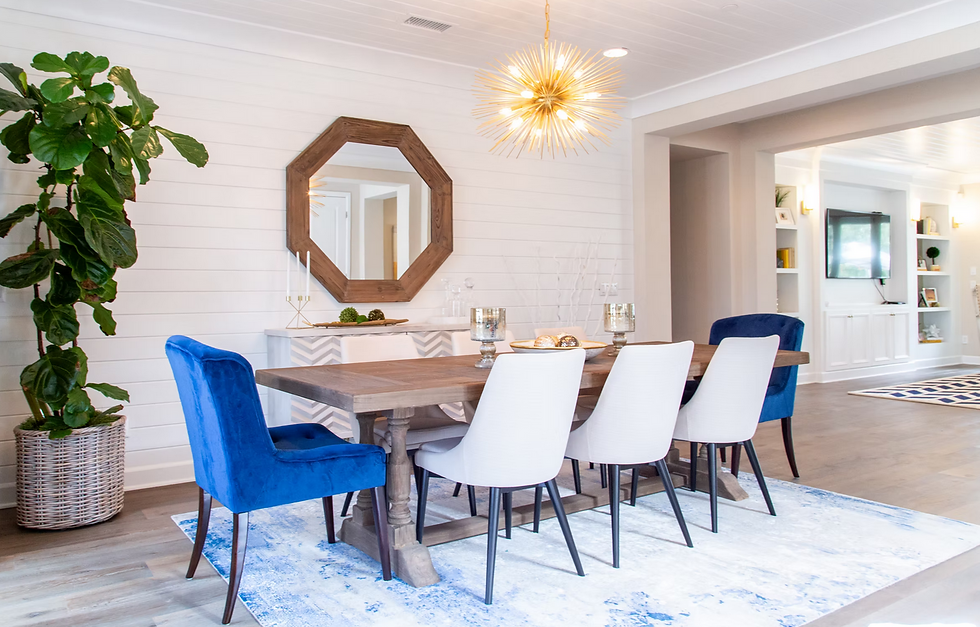Harnessing the Power of Negative Space in Modern Design: Elevating Aesthetics and Functionality
- Vision Interiors
- Aug 10, 2023
- 2 min read

Modern design has a distinct allure, characterized by its clean lines, minimalistic approach, and careful attention to detail. A significant aspect that contributes to the elegance and functionality of modern design is the concept of negative space. In this blog, we delve into the importance of negative space and how it transforms interiors into harmonious, visually appealing, and purposeful spaces.
Understanding Negative Space
Defining Negative Space: Negative space, often referred to as "white space," is the area around and between objects in a design. It's the empty space that gives breathing room to the elements, allowing them to stand out and create a balanced composition.
Visual Balance: Negative space serves as a counterpoint to the active elements in a design, providing visual balance and preventing the space from feeling cluttered or overwhelming.
Enhanced Focus: By strategically incorporating negative space, designers guide the viewer's attention to the essential elements of a room, be it a piece of furniture, artwork, or architectural feature.
Aesthetic Advancements
Sense of Openness: Negative space imparts a sense of openness and airiness to a room, making it feel more expansive and inviting. This is particularly beneficial for small spaces where avoiding visual clutter is crucial.
Elegant Simplicity: Modern design celebrates simplicity, and negative space contributes to this aesthetic by allowing design elements to shine without the distraction of excessive ornamentation.
Sophisticated Elegance: The deliberate use of negative space elevates the overall aesthetics of a room, creating an environment that exudes sophistication, refinement, and a sense of curated luxury.
Functional Benefits
Improved Functionality: Negative space is not just about aesthetics; it's about functionality too. Uncluttered areas provide room for movement and practicality, ensuring that a space is both visually pleasing and usable.
Ease of Navigation: Negative space can facilitate effortless navigation within a room. In a living room, for instance, proper negative space around furniture pieces allows people to move comfortably without feeling confined.
Mindful Living: Incorporating negative space encourages a more intentional approach to interior design. It prompts homeowners to choose items that truly resonate with their lifestyle and align with their values, rather than succumbing to excess.
Creative Applications
Artful Arrangements: Negative space can be creatively used in gallery walls to enhance the impact of individual pieces. Instead of cramming artwork together, leaving ample space around each piece adds a touch of gallery-worthy sophistication.
Furniture Placement: In modern design, furniture placement is a delicate dance. Employing negative space around furniture creates a sense of balance and lets each piece shine as a statement item.
Architectural Features: Negative space can highlight architectural features like windows, doorways, and alcoves. By framing these elements with sufficient empty space, they become focal points in their own right.
Conclusion
Negative space is the unsung hero of modern design, orchestrating a symphony of aesthetics and functionality. As you embark on your interior design journey, remember that negative space isn't simply "empty" space—it's a canvas for creativity, a tool for enhancing the visual appeal, and a conduit for improved functionality.
By thoughtfully integrating negative space into your design approach, you're not only embracing the essence of modern design but also crafting spaces that breathe, inspire, and stand as testaments to the power of less-is-more elegance.




Comments